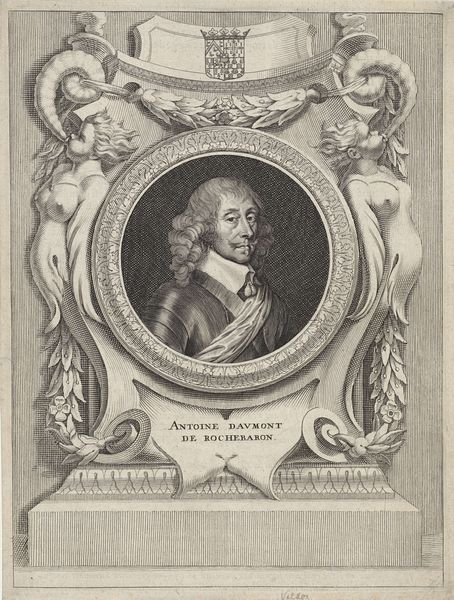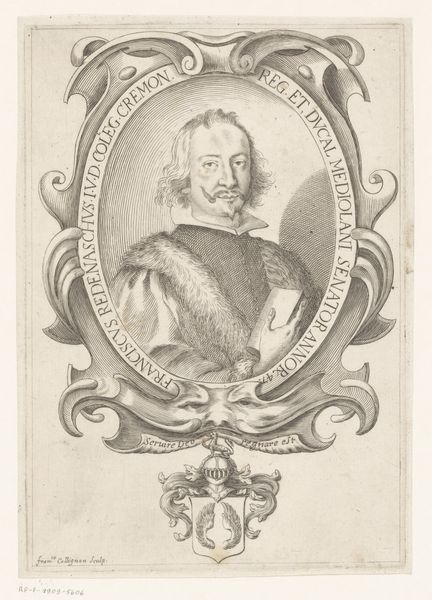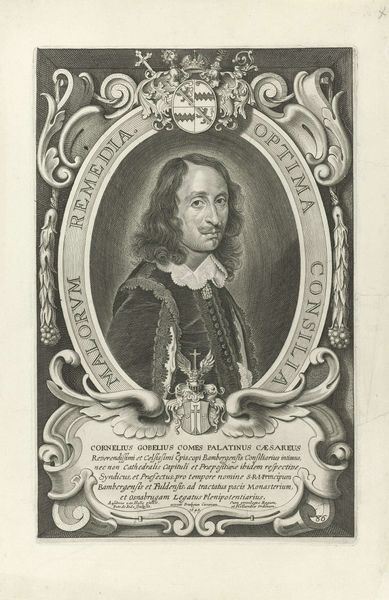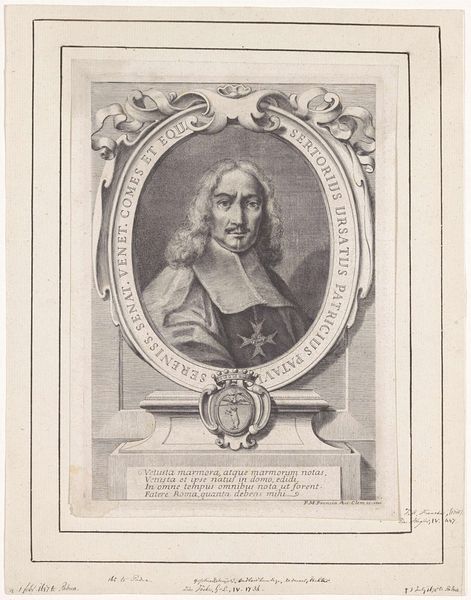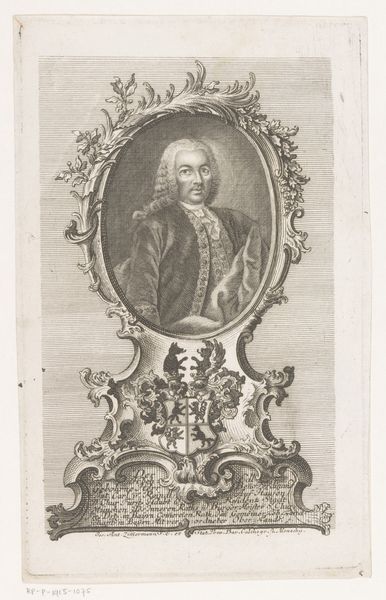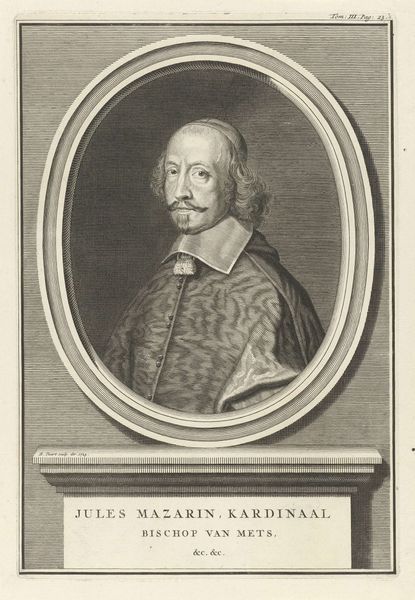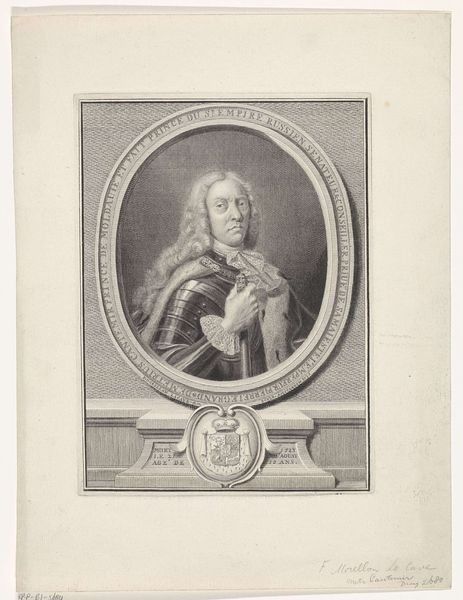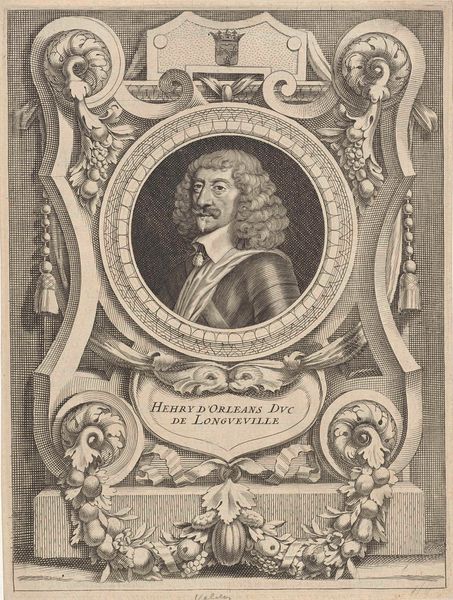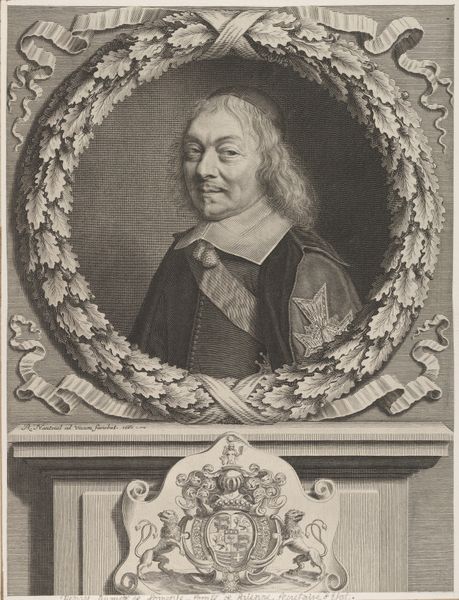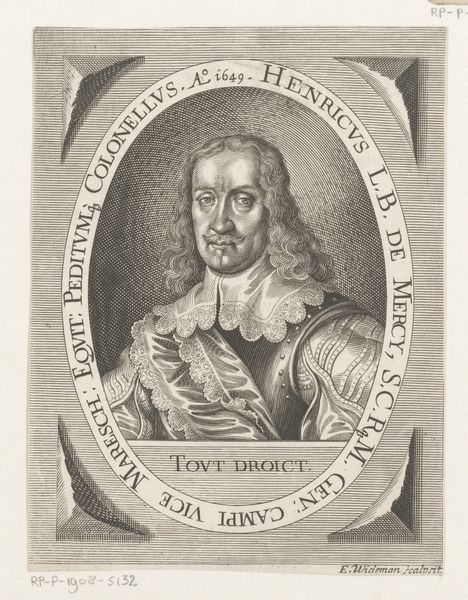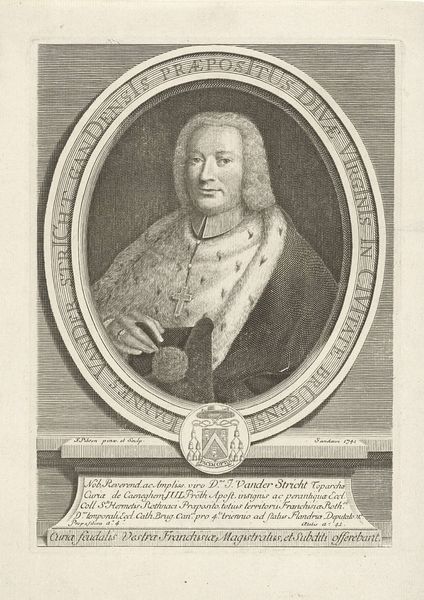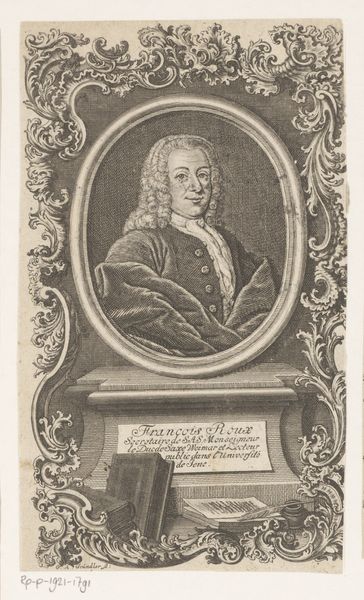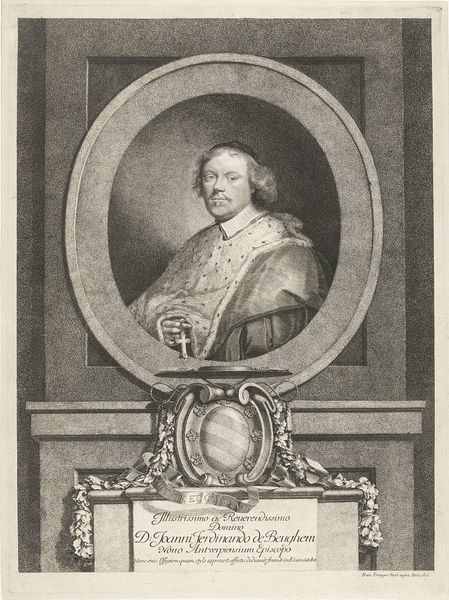
print, engraving
#
portrait
#
baroque
# print
#
history-painting
#
engraving
Dimensions: height 265 mm, width 201 mm
Copyright: Rijks Museum: Open Domain
Curator: What we have here is a Baroque portrait engraving, dating to 1649. Johannes Valdor the Younger is credited with its creation, and the title designates the man represented as François de l'Hopital. Editor: My first impression is how rigidly structured the print is. The circular portrait dominates, and the sharp lines of the framing devices give the image a strong sense of order, despite the Baroque flair of the ornamentation. Curator: Exactly. Consider the socio-political context of the mid-17th century. The formal presentation and focus on an individual—François de l’Hopital—speaks volumes about the importance placed on societal position. How do you see this interacting with the visual components? Editor: The ornate border around the portrait certainly amplifies his status; this layering effect emphasizes hierarchy through symbolic representation. Moreover, the print is inherently tied to ideas of reproducibility, circulation, and influence. Curator: And there’s also a clear element of idealization present, certainly. L’Hopital is carefully presented, and we must acknowledge that portraiture of this era was fundamentally enmeshed with constructing, controlling, and preserving identity. Can you tell me how Valdor makes use of contrast in his print? Editor: He uses dark, hatched lines to define form and build dimension in the portrait itself. The high contrast creates a certain intensity in L’Hopital's gaze, directing our attention and solidifying the picture’s focus on an idealized leader. Curator: And beyond simply being "high contrast," this visual weight creates a particular tone and mood. When analyzing how images such as this one function ideologically, we need to remember its use for solidifying status during the rise of Absolutist structures. It speaks to larger questions of social control during the early modern period. Editor: You're right. Looking at it again, the very precision of the engraved line seems to reflect the inflexible grip that nobility wished to project onto the world at the time. Well, I’ve certainly come to appreciate the image from your perspective! Curator: And I must say your keen eyes have made me think more about how formal concerns reflected a particular worldview. Art provides a crucial access point for exploring these narratives.
Comments
No comments
Be the first to comment and join the conversation on the ultimate creative platform.
